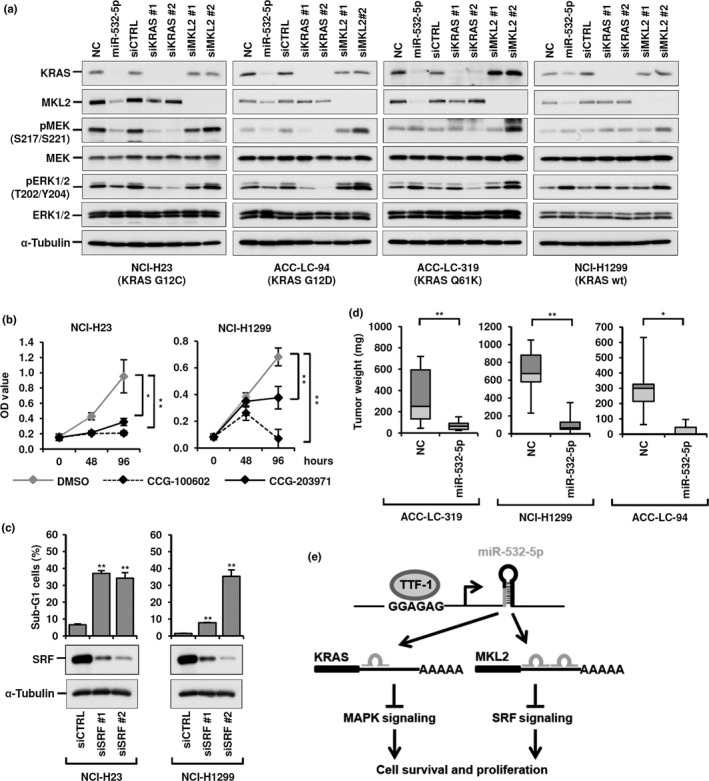Figure 5.

Cancer cell growth decreased by microRNA (miR)‐532‐5p itself and miR‐532‐5p‐affected downstream pathways. (a) Western blot analysis of MEK‐ERK signaling in four lung adenocarcinoma cell lines with and without KRAS mutations. Note that MEK‐ERK signaling was inhibited by both miR‐532‐5p and KRAS knockdown in NCI‐H23 and ACC‐LC‐94, but not ACC‐LC‐319 or NCI‐H1299 cells. (b) Colorimetric assay of effects of treatment with CCG‐100602 and CCG‐203971, MKL‐SRF pathway inhibitors, in NCI‐H23 and NCI‐H1299 cells. (c) Flow cytometry and Western blot analyses of NCI‐H23 and NCI‐H1299 cells treated with siRNA against SRF, for which MKL2 plays a role as a co‐activator. (d) Decreased tumor growth of miR‐532‐5p‐introduced lung adenocarcinoma cell lines in vivo. (e) Schematic diagram summarizing the present findings: thyroid transcription factor‐1 (TTF‐1) induces miR‐532‐5p, which in turn targets KRAS and MKL2, thus inhibiting two crucial downstream pathways, leading to induction of apoptosis in lung adenocarcinoma cells. *P < 0.05; **P < 0.01, two‐tailed Student's t‐test. NC, negative control.
